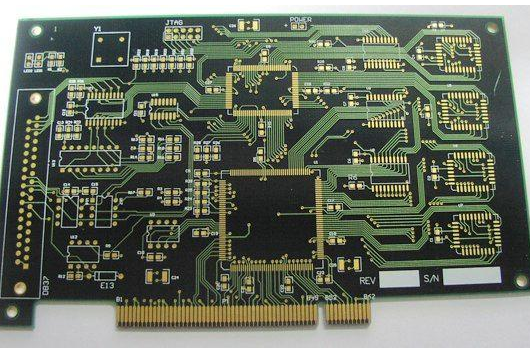The influence of through-hole PCB board substrate
The reflow of the circuit boardmultilayer board and the multilayer board TCT test will both have a degrading effect on the reliability of the through hole. The main reason is of course that the Z-axis CTE of the sheet far exceeds the CTE of the copper wall, so the board is reduced The CTE of the rubbery 2Z axis has become the most urgent task. However, simply increasing the ratio of the filler Silica (for example, 20% of the weight of the resin) will inevitably have other undesirable sequelae. Therefore, the full promotion of Filler's mass-produced plates remains to be further observed.
1. Discussion
.The three types of PN hardened plates shown in Figure 1 are first subjected to two reflows and torture with lead and lead-free, and then the TCT test is carried out to observe the relationship between the reliability of the plate and the through-hole. Among them, the MNF2 sheet with primary filler has the best final result, but the CTE/Z above Tg of MNF2 in the two strong heats is not the lowest. Although MNF1 has the worst performance of through-hole reliability among the three plates, its α2 is not the largest. It seems that there does not seem to be a direct relationship between the plate α2-CTE and the reliability of the through hole. Whether it is due to the participation of the elongation of the copper plating layer is not known.

.The following figure 2 is still three kinds of PN hardened circuit boards, but they have been tortured with lead and lead-free (all (6 times)) reflow, and then carry out the TC test of the reliability of the through-hole. However, the MNF2 circuit board still has the best performance in terms of through-hole reliability, followed by the HN board with high Tg and the lowest overall CTE/Z. The worst performance is still the MNF1 circuit board, whose overall performance is the same as the former.
.In addition to the above three types of panels, Dicy hardened FR-4 is also added for comparison. Of course, the worst result is the standard FR-4 panel. However, many CCL manufacturers are currently developing a FR-4 sheet with moderate Tg, PN hardening, and Silica filler (which can significantly reduce α2-CTE) with a weight ratio of more than 10%, hoping to adapt to various lead-free reflows. And no longer burst.
Two, summary
The circuit board of the circuit board manufacturer wants to pass the test of lead-free soldering, which is indeed unprecedented in the project. At present, the downstream customers tend to require the shipment of the multilayer board, and the strong heat resistance quality must first pass the peak temperature of 260 degree Celsius. Reflow is as many as 5-9 times. Secondly, the reliability of the through hole is also required, at least not inferior to the previous tin-lead soldering.
From the above, it can be seen that the Dicy hardened FR-4 has indeed failed to pass the test of the strong thermal stress of lead-free soldering, and the Dicy hardened FR-4 has the opportunity to fill this gap. However, the improvement of the PCB manufacturing process, the design of the PCB stack, and the optimization of both the reflow unit and the reflow curve of the assembler also play a very important role.
According to the results of the air to air long-term TCT test, the long-term reliability of the through hole is indeed closely related to the peak temperature of the reflow and the number of reflows. Too many reflow peak temperatures will indeed damage the plate and through holes. However, the relationship between the CTE/Z and TCT failure of the plate is not clear and needs to be further clarified.